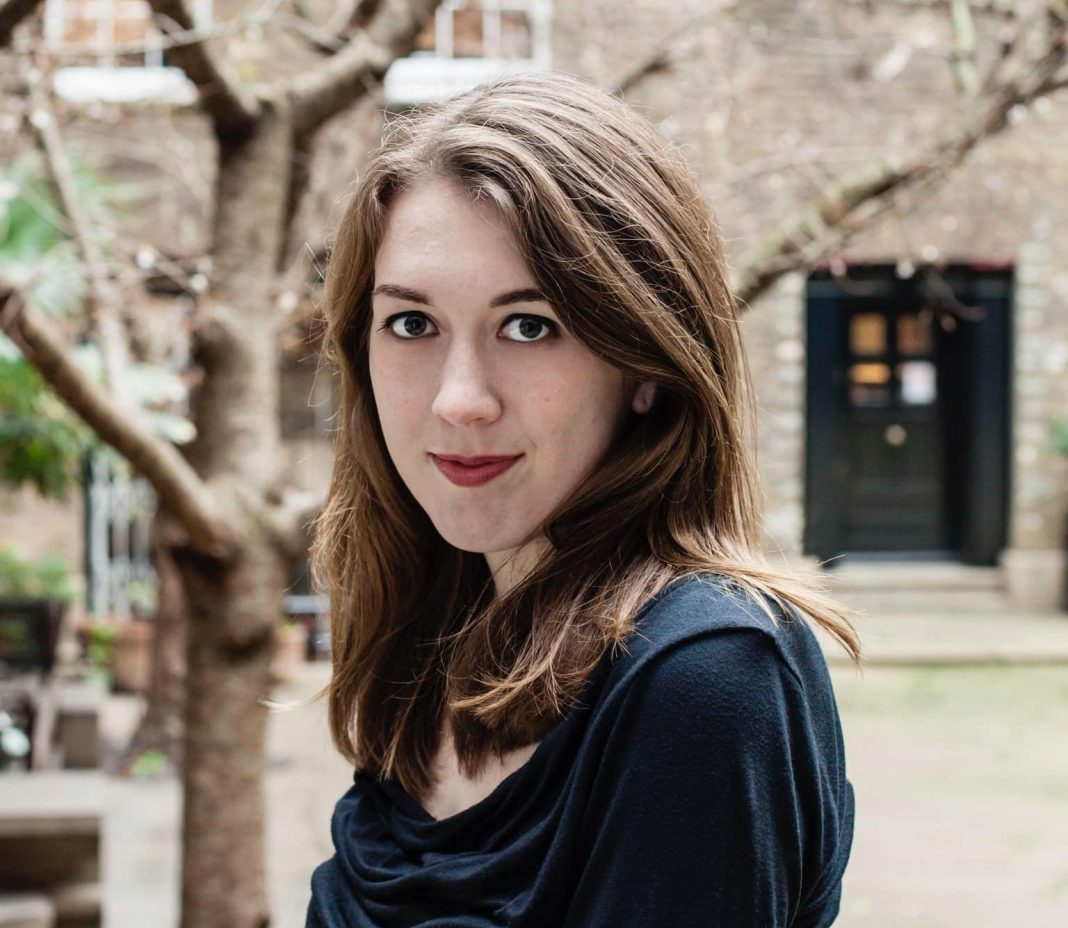Samantha Shannon is a New York Times and Sunday Times bestselling author, and an alumnus of St Anne’s College, Oxford. She is the author of two ongoing fantasy series: The Roots of Chaos, and The Bone Season, in which her latest novel, The Dark Mirror, is the fifth novel. Her debut novel, The Bone Season (2013), was first published just after she finished studying at Oxford, at just 21 years old, and celebrated the ten year anniversary of this novel in 2023.
The novel, set in a dystopian fantasy world in the year 2059, follows 19 year old Paige Mahoney – a dreamwalker, a powerful kind of clairvoyant, whose ability is punishable by death. A large part of the novel takes place in Oxford, reflecting Shannon’s time as a student at the University while she was writing the first book. Cherwell spoke with her to discuss these influences, as well as the release of The Dark Mirror.
Cherwell: How are you feeling about being over halfway through The Bone Season? Are you looking forward to wrapping everything up, or is it going to be hard to leave your protagonist, Paige Mahoney, and her world behind?
Shannon: I have mixed feelings. Part of me does look forward to writing the final book, because I’m excited to show readers how all the threads come together, but I’m also dreading the prospect of leaving the series behind. I’ve been working on this story since I was 19, and it’s been a mainstay in my life ever since; no matter what else I write, I’ve always had the reassurance of knowing I can go to the Bone Season series. I don’t think I’ll ever really leave it behind – I love the characters and the story too much. Even after I’ve finished the main series, I’ll find a way to keep playing in that world.
Cherwell: Have you found yourself wanting to deviate from the original outline of the seven books, or has the majority of the plot stayed the same since you initially planned it?
Shannon: The majority of the plot has stayed the same, aside from a significant thread I decided to cut from The Dark Mirror, which didn’t end up suiting the person Paige has become. Last year I went back and revised the first four books in the series, creating the Author’s Preferred Texts, but that was more about the writing style than it was about the story.
Cherwell: Your writing covers a lot of different styles, including a unique blend of genres just within The Bone Season. Could you tell us more about how you developed that approach?
Shannon: I think there are two basic ways of writing a long series. You either use a repeating structure, so readers know roughly what to expect from each book – that can be fun and comforting – or you shake it up to keep things fresh and interesting. I chose the second option. Each book has its own distinct flavour and aesthetic – the first is a jailbreak in Oxford, the second is a murder mystery in London, the third is a heist across multiple cities, and so on. This approach makes it difficult for readers to predict what will happen in each instalment. My mantra with the series is ‘don’t be afraid to take big risks’ and so far, I’ve stuck to it.
Cherwell: One of the interesting things about The Mask Falling, the fourth book in The Bone Season, was the exploration of the French language in the context of Scion, the oppressive empire in the series. With the setting of Italy being key to The Dark Mirror, have you taken a similar approach with Italian? How have you found working with these different languages while building an alternate world?
Shannon: I didn’t take the same approach to Italian because Italy isn’t part of the Republic of Scion, the empire that Paige is trying to defeat. The reason I tweaked French specifically was because Scion, despite being oppressive in other ways, is not a patriarchy; therefore, certain rules of the French language, such as the masculine gender always prevailing over the feminine, simply didn’t make sense in that context. The Italian in the book, on the other hand, is true to the present day. You’ll also see some Neapolitan and Venetian.
Cherwell: Another interesting aspect of the series as a whole is that it takes a global perspective on the dystopian genre, rather than focusing only on one country. What were your motivations for taking this approach, and what are the rewards and challenges this angle brings?
Shannon: As you say, dystopian fiction is often focused on one place, whether that’s a city or a community. It can be an effective way to explore a suffocating, tightly controlled environment. Nineteen Eighty-Four is set entirely in London; most of the Divergent trilogy takes place in Chicago. But I was fascinated by the idea of showing a dystopia from both the inside and the outside, contrasting it with the rest of the world. When I read The Hunger Games, I was always wondering what other countries were doing while Panem sacrifices its children. Are they watching in horror? Do they have their own copycat versions of the Hunger Games? Do they even exist any longer, or is Panem the last civilisation left on Earth? With The Bone Season, I wanted to answer those burning questions that might occur to a reader. I show the capital of Scion, but also other cities and countries it controls, as well as those that lie beyond its influence. Paige herself was also born outside Scion, in a country Scion later conquered, and remembers what it was like to be a ‘free-worlder’ before she was forced to move to London. The Dark Mirror is the first book in the series to step outside the empire.
Cherwell: Fortune telling, especially tarot cards, play a significant role in the series, and they also seem to be gaining popularity among Gen Z and Millennials. Do you have any personal experience of these practices, and has it influenced your inclusion of them in your writing?
Shannon: I actually never had my cards read until last year, so I can’t say that personal experience went into its inclusion in The Bone Season – I just loved the idea of using divination and fortune telling as the basis of a magic system. Even though I’m not generally superstitious, I was fearful of getting a ‘bad’ spread and having it play on my mind. Now I’ve had a reading, I can see why it’s so popular, as I found it a useful tool for self-reflection.
Cherwell: Readers might come to your work with an expectation of LGBTQIA+ characters, especially after the success of The Roots of Chaos series. How have you found including LGBTQIA+ characters in The Bone Season in comparison?
Shannon: The Bone Season series is centred on a relationship between a man and a woman, so I think some people miss the queerness at first glance, but it does have a lot of LGBTQIA+ representation. The Republic of Scion is a queernorm society, and several of the main and secondary characters are queer, including Nick, Arcturus – the love interest – and Maria. While the Roots of Chaos books are also queernorm to a degree, they do touch on what I might call structural homophobia, while The Bone Season doesn’t.
Cherwell: How did your experience as a student in Oxford shape your ideas for the first book in the series?
Shannon: Oxford was a double-edged sword for me. I’m so grateful for the opportunities I had there, but I felt overwhelmed, racked by imposter syndrome, and generally out of my depth in the bubble. It didn’t help that I had undiagnosed anxiety. It’s become a source of regret in the twelve years since I graduated. I often wish I could repeat my degree in a better mindset, perhaps after taking a gap year, as I know I would have enjoyed it far more if I hadn’t been so burned out from my A-Levels. I have such a hunger for knowledge these days, and I’m far more confident and comfortable in my own skin. In hindsight, I needed a breather from academia before I dived into the pressure cooker.
Cherwell: What were your favourite parts of being a student in Oxford? Are there any particular shops, cafes, restaurants etc. that you’d recommend to current students?
Shannon: I didn’t go to Magdalen, but I’ve always loved that college, which is why I set most of The Bone Season there. It’s so beautiful – I always visit when I’m in Oxford. I was a Stanner, so my usual student haunt was St Anne’s Coffee Shop, but I loved Manos in Jericho for a Greek takeaway, and I remain a big fan of Queen’s Lane Coffee House for slap-up brunch. Finally, the milkshakes at Moo Moos in the Covered Market always hit the spot. I’m so glad all these places are still going strong.
Cherwell: You’ve previously mentioned video games as an underrated form of storytelling. Which games stand out to you as examples of powerful narratives?
Shannon: My dear friend Tasha Suri recently convinced me to dive into Baldur’s Gate 3. I had never really tried D&D or any sort of turn-based game before, so there was a learning curve, but the characters and story are so compelling, it’s all I can do not to play all the time. Some other games I’ve really enjoyed for the story are A Plague Tale, Ghost of Tsushima, and Portal 2.
The Dark Mirror by Samantha Shannon is out now, published by Bloomsbury on 25th February 2025.


